Period 1228 – 1229 | Result Diplomatic compromise. | |
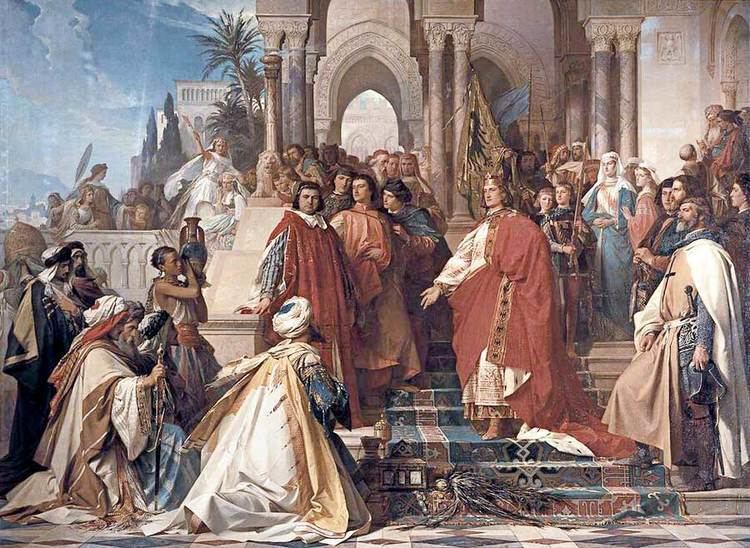 | ||
Similar | ||
The Sixth Crusade started in 1228 as an attempt to regain Jerusalem. It began seven years after the failure of the Fifth Crusade and involved very little actual fighting. The diplomatic maneuvering of the Holy Roman Emperor, Frederick II, resulted in the Kingdom of Jerusalem regaining some control over Jerusalem for much of the ensuing fifteen years (1229–39, 1241–44) as well as over other areas of the Holy Land.
Contents
- Frederick ii and the sixth crusade 1228 29 debunking the myths
- Frederick II and the Papacy
- Stopover in Cyprus
- In the Kingdom of Jerusalem
- Diplomatic agreement with Sultan al Kamil
- In Jerusalem
- Legacy and precedent
- References
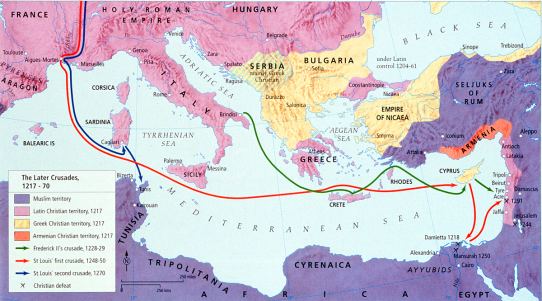
Frederick ii and the sixth crusade 1228 29 debunking the myths
Frederick II and the Papacy

Frederick II, Holy Roman Emperor, had involved himself broadly in the Fifth Crusade, sending troops from Germany, but he failed to accompany the army directly, despite the encouragement of Honorius III and later Gregory IX, as he needed to consolidate his position in Germany and Italy before embarking on a crusade. However, Frederick again promised to go on a crusade after his coronation as emperor in 1220 by Pope Honorius III.

In 1225 Frederick married Yolande of Jerusalem (also known as Isabella), daughter of John of Brienne (nominal ruler of the Kingdom of Jerusalem) and Maria of Montferrat. Frederick now had a claim to the truncated kingdom, and reason to attempt to restore it. In 1227, after Gregory IX became pope, Frederick and his army set sail from Brindisi, Italy, for Acre (then the capital of the truncated Kingdom of Jerusalem), but an epidemic forced Frederick to return to Italy. Gregory took this opportunity to excommunicate Frederick for breaking his crusader vow, though this was just an excuse, as Frederick had for years been trying to consolidate imperial power in Italy at the expense of the papacy.
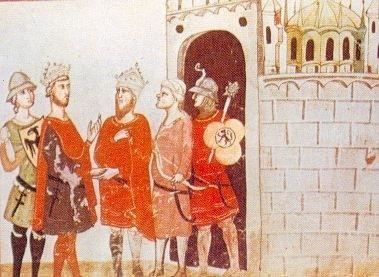
Gregory stated that the reason for the excommunication was Frederick's reluctance to go on crusade, dating back to the Fifth Crusade. Frederick attempted to negotiate with the pope, but eventually decided to ignore him, and sailed to Syria in 1228 despite the excommunication, arriving at Acre in September.
Stopover in Cyprus
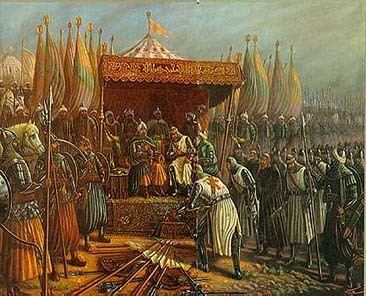
Instead of heading straight for the Holy Land, Frederick first sailed to Cyprus, which had been an imperial fiefdom since its capture by Richard the Lionheart on his way to Acre during the Third Crusade. The emperor arrived with the clear intent of stamping his authority on the kingdom, but was treated cordially by the native barons until a dispute arose between him and the constable of Cyprus, John of Ibelin. Frederick claimed that his regency was illegitimate and demanded the surrender of John's mainland fief of Beirut to the imperial throne. Here he erred, for John pointed out that the kingdoms of Cyprus and Jerusalem were constitutionally separate and he could not be punished for offences in Cyprus by seizure of Beirut. This would have important consequences for the crusade, as it alienated the powerful Ibelin faction, turning them against the emperor.
In the Kingdom of Jerusalem
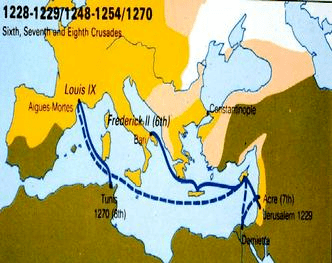
Acre, as the nominal capital of the Kingdom of Jerusalem and the seat of the Latin Patriarchate, was split in its support for Frederick. Frederick's own army and the Teutonic Knights supported him, but Patriarch Gerald of Lausanne (and the clergy) followed the hostile papal line. Once news of Frederick's excommunication had spread, public support for him waned considerably. The position of the Knights Hospitaller and Knights Templar is more complicated; though they refused to join the emperor's army directly, they supported the crusade once Frederick agreed to have his name removed from official orders. The native barons greeted Frederick enthusiastically at first, but were wary of the emperor's history of centralization and his desire to impose imperial authority. This was largely due to Frederick's treatment of John of Ibelin in Cyprus, and his apparent disdain for the constitutional concerns of the barons.
Diplomatic agreement with Sultan al-Kamil
Even with the military orders on board, Frederick's force was a mere shadow of the army that had amassed when the crusade had originally been called. He realised that his only hope of success in the Holy Land was to negotiate for the surrender of Jerusalem as he lacked the manpower to engage the Ayyubid empire in battle. Frederick hoped that a token show of force, a threatening march down the coast, would be enough to convince al-Kamil, the sultan of Egypt, to honor a proposed agreement that had been negotiated some years earlier, prior to the death of al-Muazzam, the governor of Damascus. The Egyptian sultan, occupied with the suppression of rebellious forces in Syria, agreed to cede Jerusalem to the Franks, along with a narrow corridor to the coast.
In addition, Frederick received Nazareth, Sidon, Jaffa, and Bethlehem. Other lordships may have been returned to Christian control, but sources disagree. It was, however, a treaty of compromise. The Muslims retained control over the Temple Mount area of Jerusalem, the al-Aqsa Mosque, and the Dome of the Rock. The Transjordan castles stayed in Ayyubid hands, and Arab sources suggest that Frederick was not permitted to restore Jerusalem's fortifications, although the Crusaders did in fact restore Jerusalem's defensive walls. The treaty, completed on 18 February 1229, safeguarded a 10-year truce.
One of the results of the treaty was that Jews were once more prohibited from living in Jerusalem.
The agreement is known sometimes as the Treaty of Jaffa and Tell Ajul to also include the agreement signed by the different Ayyubid rulers at Tell Ajul near Gaza, of which, from al-Kamil's perspective, the treaty with Frederick was just an extension. This agreement should not be confused with the 1192 Treaty of Jaffa between Saladin and Richard Lionheart.
In Jerusalem
Frederick entered Jerusalem on 17 March 1229, and attended a crown-wearing ceremony the following day. It is unknown whether he intended this to be interpreted as his official coronation as King of Jerusalem; in any case the absence of the patriarch, Gerald, rendered it questionable. There is evidence to suggest that the crown Frederick wore was actually the imperial one, but in any case proclaiming his lordship over Jerusalem was a provocative act. Legally, he was actually only regent for his son Conrad II of Jerusalem, only child of Yolande and the grandson of Maria of Montferrat and John of Brienne, who had been born shortly before Frederick left in 1228.
Legacy and precedent
As Frederick had matters to attend to at home, he left Jerusalem in May. It took a defeat in battle later in 1229 for the Pope to lift the excommunication, but by now Frederick had demonstrated that a crusade could be successful even without military superiority or papal support.
The ten-year expiration of Frederick's treaty with Al-Kamil caused Pope Gregory IX to call for a new crusade to secure the Holy Lands for Christendom beyond 1239. This initiated the Barons' Crusade, a disorganized affair which wound up with relatively limited support from both Frederick and the pope, but which nevertheless regained more land than even the Sixth Crusade.
Frederick had set a precedent, in having achieved success on crusade without papal involvement. He achieved success without fighting since he lacked manpower to engage Ayyubids. This was due to the engagement of Ayyubids with the rebellion in Syria. Further crusades would be launched by individual kings, such as Theobald I of Navarre (the Barons' Crusade), Louis IX of France (the Seventh and Eighth Crusades), and Edward I of England (the Ninth Crusade), effectively demonstrating an erosion of papal authority.
Cecelia Holland's novel Antichrist presents a heavily fictionalized account of the Sixth Crusade from Frederick II's perspective.
